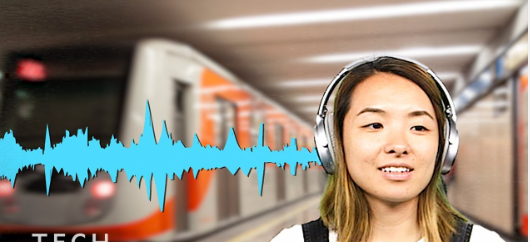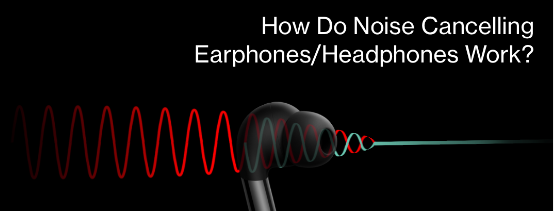In today’s fast-paced world, noise-cancelling headphones have become an essential tool for anyone looking to block out the chaos of their surroundings. Whether it’s the constant hum of airplane engines, the chatter of a crowded café, or the hustle and bustle of a busy city street, these headphones allow users to create a personal bubble of tranquility. But how exactly do they work? What technological magic allows them to cancel out noise and provide such a serene listening experience? This article will dive deep into the science and technology behind noise-cancelling headphones, examining both their active and passive noise-cancelling features, their components, and how they impact the way we interact with sound.
The Science Behind Noise: Understanding Sound Waves
Before we explore how noise-cancelling headphones work, it’s essential to understand the basics of sound. Sound is a wave that travels through air (or another medium) in the form of vibrations. These vibrations create alternating areas of high and low pressure, which our ears perceive as sound. The speed, Cancelling Headphones Work frequency, and amplitude of these waves determine the pitch and volume of the sound.
For instance, high-frequency sound waves create high-pitched noises like birds chirping, while low-frequency waves are responsible for the deep hum of an engine. Sound waves, like all waves, can interfere with one another. This principle of wave interference is at the heart of noise-cancelling technology.
Active vs. Passive Noise-Cancelling Technology
Noise-cancelling headphones typically use two different methods to reduce unwanted sound: passive noise isolation and active noise cancellation (ANC).
Passive Noise Isolation
Passive noise isolation is the simpler of the two methods and relies on the physical design and materials used in the headphones to block out external noise. Most traditional headphones offer some degree of passive noise isolation. Over-ear headphones, for example, use thick ear cushions that form a seal around the ears to block out external sounds. Similarly, in-ear headphones (earbuds) can be designed to fit snugly into the ear canal, Cancelling Headphones Work providing a barrier to outside noise.
The effectiveness of passive noise isolation depends largely on the materials used and the fit of the headphones. Headphones designed with denser padding and a better ear seal can block more external noise, particularly high-frequency sounds like voices. However, passive isolation is often insufficient for reducing low-frequency noises, such as the drone of an airplane engine or the rumble of traffic.
Active Noise Cancellation (ANC)
Active noise cancellation, on the other hand, is a more advanced method that uses electronics and sound wave manipulation to cancel out unwanted noise. Unlike passive isolation, which physically blocks sound, ANC actively works to eliminate sound waves through a process known as destructive interference. Here’s how it works:
- Microphones Capture External Noise: ANC headphones are equipped with small microphones located on the outside and inside of the ear cups. These microphones continuously monitor the sounds in the environment, picking up external noise that needs to be canceled.
- Noise-Detection and Inversion: Once the microphones detect external noise, the headphones’ internal circuitry analyzes the sound waves. It then generates an “anti-noise” wave, Cancelling Headphones Work which is an inverted version of the external noise. The anti-noise wave has the same amplitude (loudness) as the external noise but with the peaks and troughs reversed.
- Destructive Interference: When the anti-noise wave is played back through the headphones, it interacts with the original external sound wave. Because the two waves are exact opposites, they cancel each other out through destructive interference. This process effectively reduces or eliminates the perception of the external noise, allowing the listener to focus on their music or silence.
- Real-Time Processing: All of this happens in real time. The microphones continuously capture and analyze external sounds, and the headphones adjust the anti-noise signal accordingly. Modern ANC systems are highly sophisticated, capable of adapting to different types of noise (e.g., steady background noise vs. sudden, sharp sounds) and adjusting their cancellation techniques dynamically.
 For the more information click on this link
For the more information click on this link
How Effective is Active Noise Cancellation?
ANC is particularly effective at reducing low-frequency, consistent sounds, such as the hum of an air conditioner, the rumble of an airplane engine, or the drone of a car’s tires on the highway. These types of noises have relatively simple waveforms, making it easier for ANC systems to generate an anti-noise wave that cancels them out.
However, ANC is generally less effective at canceling high-frequency or rapidly changing sounds, such as human speech, sharp claps, or sirens. This is because high-frequency sounds have more complex waveforms, making it more difficult to generate a precise anti-noise wave. That said, Cancelling Headphones Work modern ANC headphones have become increasingly sophisticated in handling a wider range of sound frequencies, thanks to advancements in digital signal processing (DSP) technology.
Types of Active Noise Cancellation
There are two main types of ANC used in headphones: feedforward and feedback ANC. Some headphones even combine both techniques for optimal noise cancellation.
- Feedforward ANC: In this method, the microphones used to detect external noise are located on the outside of the ear cup. These microphones capture ambient sounds before they reach the user’s ears, and the headphones generate the anti-noise wave accordingly. Feedforward ANC is typically more effective at canceling out high-frequency noise ,Cancelling Headphones Work as it catches the sound before it enters the ear.
- Feedback ANC: In feedback ANC, the microphones are located inside the ear cup, close to the speaker or driver. These microphones capture noise that has already made its way into the ear cup and work to cancel it out. Feedback ANC is generally more effective at canceling low-frequency noise, such as engine rumble, Cancelling Headphones Work but it may struggle with sudden, unpredictable noises.
- Hybrid ANC: As the name suggests, hybrid ANC combines both feedforward and feedback techniques. Hybrid ANC headphones have microphones both inside and outside the ear cup, allowing them to capture a broader range of noise and provide more comprehensive cancellation. This method is often found in premium headphones and offers the best overall noise cancellation performance.
 For the more information click on this link
For the more information click on this link
Components of Noise-Cancelling Headphones
Several key components work together to enable active noise cancellation in headphones. Here are the main parts involved in the process:
- Microphones: As mentioned earlier, noise-cancelling headphones rely on microphones to detect external sound. These microphones are crucial for picking up the environmental noise that needs to be canceled out.
- Digital Signal Processor (DSP): The DSP is the brain of the noise-cancelling system. It processes the information received from the microphones and generates the anti-noise signal. The DSP needs to work quickly and accurately to ensure that the anti-noise signal is in perfect phase with the external noise, allowing for effective cancellation.
- Speakers/Drivers: The headphones’ speakers not only play music but also emit the anti-noise signal. The quality and responsiveness of the speakers are essential for ensuring that the anti-noise wave is delivered precisely and effectively.
- Battery: ANC technology requires power, Cancelling Headphones Work so most noise-cancelling headphones are equipped with rechargeable batteries. The energy consumption depends on the sophistication of the ANC system and how intensively it’s being used. Some premium headphones offer long battery life, often exceeding 20-30 hours of use on a single charge.
- Ear Cups/Ear Tips: The physical design of the ear cups (for over-ear headphones) or ear tips (for in-ear models) is also an important factor in noise cancellation. A good seal around the ears or in the ear canal enhances passive noise isolation, Cancelling Headphones Work which works in tandem with active noise cancellation to create a more immersive, noise-free experience.
 For the more information click on this link
For the more information click on this link
Applications of Noise-Cancelling Headphones
Noise-cancelling headphones have become popular in a variety of settings and for different types of users:
- Travelers: Perhaps the most common use case for noise-cancelling headphones is during travel. Whether on a plane, train, or bus, ANC headphones can block out the constant engine noise and other background sounds, making long journeys more pleasant.
- Office Workers: Many people use noise-cancelling headphones in office environments to block out distractions and focus on their work. Open-office plans, in particular, can be noisy ,Cancelling Headphones Work and ANC headphones provide a way to concentrate in a busy environment.
- Students: For students studying in libraries or coffee shops, noise-cancelling headphones help create a quiet environment for better focus and productivity.
- Gamers and Audiophiles: Gamers and music lovers often appreciate the improved sound quality offered by noise-cancelling headphones. By eliminating background noise, Cancelling Headphones Work these headphones allow users to immerse themselves fully in their games or music, hearing every detail with greater clarity.
- Health and Wellness: Some users wear noise-cancelling headphones for mental health and relaxation purposes. By eliminating environmental noise, Cancelling Headphones Work these headphones can help reduce stress, improve concentration during meditation, or create a calming atmosphere in noisy environments.
The Future of Noise-Cancelling Technology
As technology continues to advance, the capabilities of noise-cancelling headphones are expected to improve. Future developments may include more precise noise cancellation across a broader range of frequencies, longer battery life, and integration with other smart devices. We may also see noise-cancelling technology being used in other types of wearable devices, such as augmented reality (AR) or virtual reality (VR) headsets.
Manufacturers are also exploring ways to make noise-cancelling headphones more adaptive, allowing them to adjust to different environments automatically. For instance ,Cancelling Headphones Work future models could detect when a user is in a particularly noisy environment, such as a train station, and enhance the noise-cancellation settings accordingly.
Conclusion
Noise-cancelling headphones represent a marvel of modern engineering, blending physics, electronics, and digital signal processing to create a more peaceful listening experience. By using both passive isolation and active noise cancellation techniques, these headphones can significantly reduce the impact of external noise, making them invaluable in a wide range of settings. Whether you’re a frequent traveler, Cancelling Headphones Work a busy professional, or simply someone who values a little peace and quiet, noise-cancelling headphones offer a technological solution to the noise pollution of modern life. ALSO READ:-NATO Military Committee Chair and Allies Support Ukraine’s Use of Long-Range Weapons Against Russia: A Strategic Overview 2024




